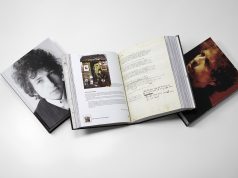
Standing in a bus station in Mumbai, Molly Brown lit a fresh cigarette off the smoldering stub of another — it’s not that the American nurse didn’t know better, it’s just that she didn’t give a damn anymore. Extreme pain will do that.
It was December 2006, around New Year’s Eve. Brown, a Boulder resident, already stood out in India’s largest city as a tall white woman, despite the teal, paisley salwar kameez she’d had tailored just a few weeks earlier specifically not to stand out so much as she traveled through the country. Now, here she was in this bus station — knees swollen to the size and color of ruby red grapefruits, barely able to walk, sweaty from the heat and pain, drained from dealing with dysentery, red-eyed from tears and a steadily clearing infection in both eyes — chain-smoking.
The outfit was no disguise. Brown definitely stood out.
And she had no idea what was happening to her knees.
These are not my sexy 32-year-old knees, Brown thought to herself. But there they were, hot and pulsing, looking completely foreign on her athletic frame.
Just that morning, Brown was sure the stiffness in her knees was from being cramped on a long train ride the day before. The train ride marked the end of Brown’s honeymoon with her husband Dan, and the beginning of a long-dreamedof solo journey through India for Brown.
She kept telling herself that everything would be OK if she could just make it north to Igatpuri where she was planning to take a 10-day Vipassana meditation course — because this was the dream, to travel India alone, meditating, volunteering and experiencing the wonders of the ancient, bustling subcontinent. And now here she was. Alone. In excruciating pain.
Instead of making her way to Igatpuri, Brown stayed in Mumbai and made her way to Breach Candy Hospital where she would stay for the next two weeks, putting four years of Vipassana practice to use as she searched for any comfort or hope beyond the blinding pain, beyond the inability to do much more than move herself to a bedside commode.
Of the many journeys Brown had taken in her life, this one was unique — the nurse became the patient. The healer became the ailing. The journey was more internal, and more solitary, than any before. She was thousands of miles from her family, and it would be days before she could make contact with someone from home, and days more before Dan could fly back to be by her side.
“I knew when I was laying in that hospital bed in India… I absolutely knew I would write a book,” Brown says. “It was so clear to me. I’d always been a writer — traditionally a poet, but I’d never formally written. But I knew I was going to write a book.”
It took Brown nearly eight years, but she finally wrote that book. Learning to Walk in India: A Love Story, published in September 2015, details how Brown negotiates new emotional, physical and cultural terrain after a life-altering illness renders her dependant on those around her, thousands of miles from home.
It took nearly a week, but Brown’s medical team at Breach Candy Hospital finally told her she had Reiter’s Syndrome (more often called reactive arthritis to avoid evoking the name of Hans Conrad Julius Reiter, a German physician convicted of war crimes for his medical experiments at Buchenwald concentration camp). The disease is kicked off by an infection — in Brown’s case, likely food tainted with bacteria, which caused dysentery — and within one to three weeks, causes swelling, heat and pain in large joints, such as the knees or hips.
“There’s sort of a triad of things that happen with the syndrome I developed. The eye infection was part of it,” Brown says. “But I was set up with that illness.”
Indeed, Brown discovered she has a gene known as HLA-B27 — 94 percent of people who develop reactive arthritis have this gene. Most people are able to recover from the initial flare of symptoms within two to four months, but because of her genetic disposition, Brown was told she might see a recurrence of symptoms or chronic arthritis.
“I got lucky — I got better,” Brown says. “I still deal with the [effects] from this, so it’s not entirely over for me — I still see a rheumatologist — but I have an amazing quality of life.”
But Brown had to work hard to revive that quality of life — part of which involved writing a book about her vulnerable experience in India.
Writing the book was a journey in itself for Brown. When she returned to Colorado in January 2007, she was unable to walk for long distances or periods of time and still taking regular physical therapy. Going back to work as a cardiac nurse at Boulder Community Hospital wasn’t an immediate option, so she began to write, crafting the earliest manuscript of the book between 2007 and 2009.
Brown decided in 2009 that she wanted to get serious about publishing the book, so she traveled to a literary conference in Manhattan, set on finding an agent.
“At that point I thought you have to have a literary agent,” she says. “But I came back from there so deflated, the wind out of my sails.”
In particular it was a “first page” workshop that robbed Brown of her confidence. Participants were asked to stand up and read the first page of their book in front of literary agents. Brown says one agent told her the excerpt was “overwritten,” while another agent quipped, “It’s not another rehab book is it?”
“I was younger, and I still gave a shit what other people thought,” Brown admits. “I hadn’t learned that there are other opinions out there and not to take people’s comments to heart. I just hadn’t gotten there yet.”
But the universe wasn’t going to let Brown give up so easily — an ongoing theme in her life. A coworker began begging to read the manuscript, as her husband was a widely published author. Brown acquiesced and waited.
“Her response to my book was, ‘You have to publish this,’” Brown says. “She lit that flame again for me. I got inspired.”
So Brown began working on the book again, but life called her on another journey, and she paused writing for two years to get her master’s degree and become a nurse practitioner.
“When I got through my first year of practice, space and time opened up and the creativity was there,” she says.
Brown says the passage of time improved her writing process — and her vision of herself. When she began the manuscript, she simply wasn’t capable of writing the raw story that eventually shows up in the published work.
“The story in India and what is in the book never changed, the actual events, but there was stuff in there that I wouldn’t have been in able to put in… it isn’t until we can look back that we can get that perspective,” she says. “What I realize now is that I had to grow a lot before I could write this book. I had to get to the point where I wasn’t afraid of what other people thought. I wasn’t afraid to stand there and be fully seen. And you really can’t care what people think when you do that.”
Brown says her fear was rooted in needing “permission” to show the part of her that’s “wise, powerful, in touch and connected.”
“What I realize now looking back is the earlier version of myself was OK with letting people see the parts of me that were inspired and happy, but I wasn’t OK with letting the world see the part of me that was grieving and terrified and there was this air of, ‘It all has to look good,’” she says. “It’s not until you get into yourself and realize what we are — really what we are — that we can learn to love all of ourselves.”
And that’s why her book is a “love story” — because her illness, the time in India, the setbacks with publishing, the months of depression and physical therapy were all just part of the process she needed to truly love herself.
“The journey to bring the book out took almost eight years, but I think that what I’m left with is just keep following the inspiration. Keep following the drive,” Brown says. “That’s the inner compass. That’s the North Star as far as I’m concerned.”














